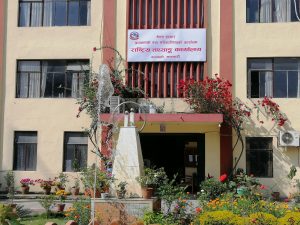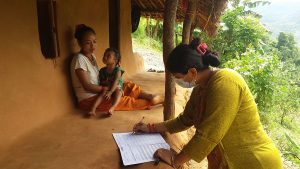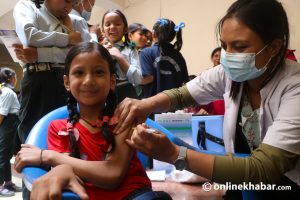The Ministry of Health and Population has issued a circular to the provincial health directorates, district health offices and local government requesting vigilance to prevent the spread of the new Covid-19 Omicron variant.
According to the ministry, during the third wave, it is likely that the cases be more contagious than it was during the peak of the second wave. During the second wave, the highest of 9,200 people had been infected a day, resulting in a shortage of beds and oxygen at the hospitals.
The positivity rate of new Covid-19 cases has already increased with an average of 1,200 cases a day. However, only 27 people in Nepal have been confirmed to be infected with the Omicron variant. But, the ministry officials say there have already been signs that the third wave, probably due to the new variant, has already begun.
1. Growing negative ‘S gene’

Gene sequencing is performed to determine if the virus in a Covid-19-infected person is an Omicron variant. Before that, the positive samples are screened, in which only those with ‘S gene’ negative are further sent for gene sequencing.
According to Dr Runa Jha, the director of the National Public Health Laboratory, the number of negative ‘S genes’ in the samples coming from all over the country is increasing. Earlier, of the three samples that had ‘S gene’ negative, all tested positive for Omicron. “In the past, only two or three out of 2,000 had ‘S gene’ negative. But, nowadays, that number is increasing so the threat is growing.”
“We strongly recommend contact tracing and have informed the Epidemiology and Disease Control Division,” she adds.
Dr Prabhat Adhikari, an infectious disease specialist, also says the increase in ‘S gene’ negative cases might indicate that the number of Omicron cases is also increasing in Nepal, resulting in the third wave. “Since the Omicron variant can be twice or thrice more contagious than other variants, we need immediate action to prevent and control it.”
2. Increasing cases at border points

According to Epidemiology and Disease Control Division, the number of infected people found at the Nepal-India border points has been increasing in recent days. The ministry, acknowledging it, has issued a circular urging to speed up the testing at the border areas. “The increase in cases is a sign of a third wave.”
Similarly, the average R-value of coronavirus that had dropped to 0.6 in June/July now has reached 1.04. If the R-value, the transition rate, is more than one, it is understood that the infection is on the rise, bringing in the third wave. R-value shows how many people an infected person can further infect.
3. Omicron spread in India
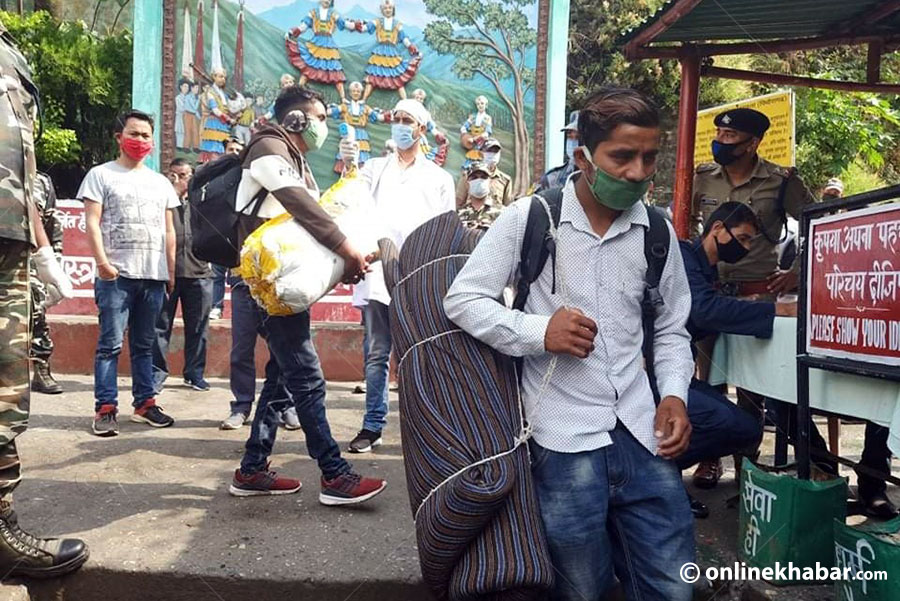
The Omicron variant is spread across different cities of India with over 4,800 confirmed cases of the variant so far. Maharastra, West Bengal, Uttarakhand, Kerela and Delhi have reported many cases.
Due to the open border, the infection in India can easily trigger the third wave here. In the first and second waves too, Nepal reported cases that came from across the border.
“Some Indian cities have gone into semi-lockdown, which means the number of Nepalis returning from employment may increase, and bring in more cases of Omicron,” EDCD Director Dr Krishna Prasad Paudel expresses.
Earlier, the Delta variant was reported in Nepal 46 days after it was reported in India. However, as Omicron spreads faster than other variants, public health experts say that the crisis may come to Nepal very soon. “It is a challenge to stop the infection as Omicron is easily transmitted through borders and airports,” Paudel says, citing that the loose control of the open border points and less testing can again be an issue.
4. Low vaccination rate
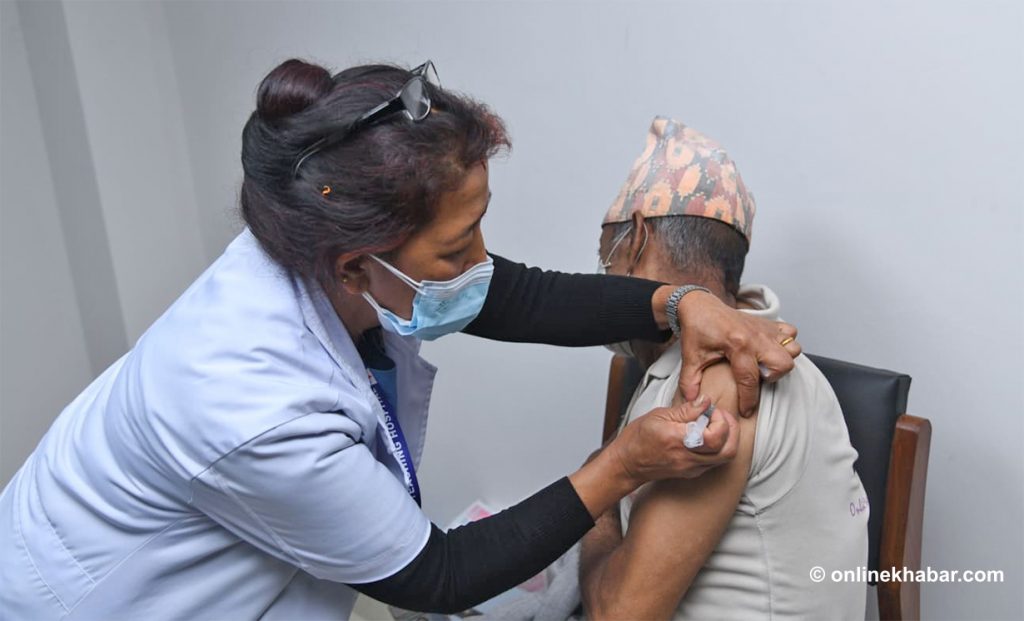
Even with the availability of vaccines in Nepal, the government has not been able to launch a campaign accordingly. There are indications that the target of vaccinating 66 per cent of the population will not be achieved even by the end of January. Only intensifying the vaccination campaign can control the damage that Omicron can inflict, epidemiologist Dr Kedar Baral explains.
According to the latest figures from the ministry, 37.8 per cent of the population has been fully vaccinated and another 12.7 per cent have been vaccinated in one dose.
The government had decided to run a vaccination campaign at the rate of Rs 500,000 daily for 15 days as the risk of Omicron variant increased. However, it has not been the reality.
“Only vaccination on time can reduce mortality. The government should intensify the vaccination campaign and prioritise the health workers, senior citizens and those battling long-term diseases,” says Baral.
Experts also suggest the government should focus on hospital bed management, infrastructure development, oxygen and medicine for the management of the third wave.
5. Lack of public vigilance
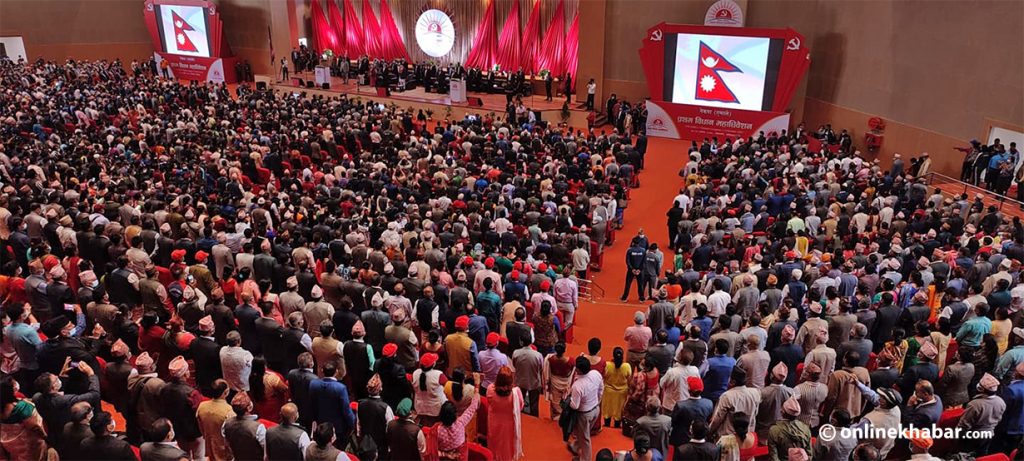
Even while the Delta variant was spreading in Nepal, there was a mentality among the people that Covid-19 was nothing. People were not using masks in crowds or maintaining social distance and this similar behaviour will invite the third wave now, says Baral.
Similarly, various political parties have been holding rallies and conventions regularly for some time now. Experts say that the effect will be seen in a few weeks.
How to prevent infection
The Omicron variant spreads way faster than the Delta variant. But, even with the rise of the Omicron threat, the number of testing has dropped. It means the third wave is here way sooner than people realise.
Therefore, experts say that in order to reduce the spread of Omicron, strict adherence to public health standards should be followed along with the expansion of testing and access to vaccines.
The epidemic cannot be controlled if the infected cannot be identified or isolated, infectious disease specialist Dr Anup Banstola explains. Adhikari also accepts that infection sources and those identified in contact tracing should be vigorously tested as the timeframe when we can prevent the third wave is very less.
However, Adhikari explains, ”Samples for testing of Omicron variant need to be brought to Kathmandu. And the report comes out after a month. By the time the results come out, one person will have transmitted the infection to many.”
Epidemiologist Dr Biraj Karmacharya also says vaccinations should be expedited as the third wave can be seen more visibly this month.






